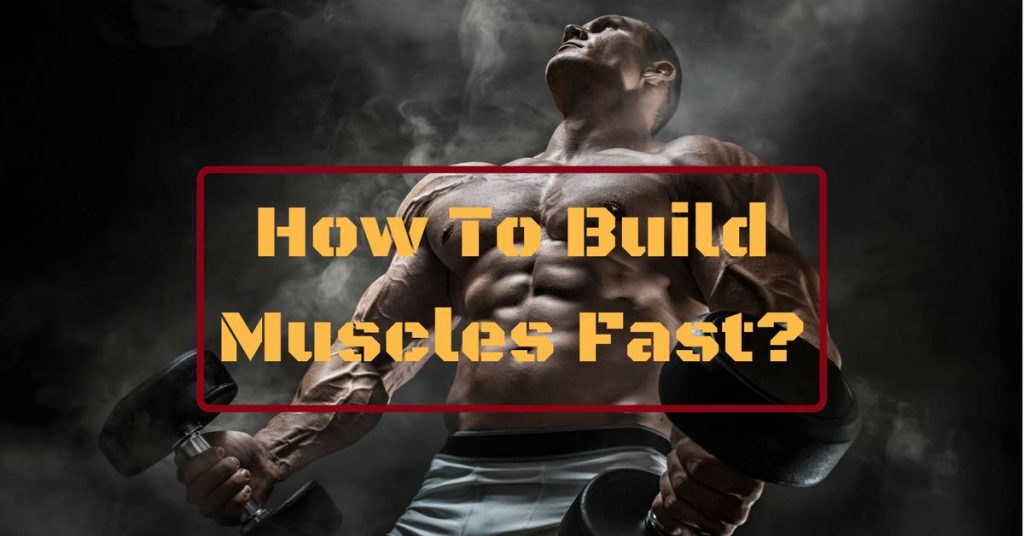Bodybuilding is arguably one of the best training methods to improve aesthetics and physique of a human body. Although, enthusiasts alike fail to understand the core of the necessary approaches and methods of muscle growth. Some end up wasting their time and energy going to the gym, and be inefficient with their training.
There are no specific rules as it can be different for everybody because, you could be a hard-gainer that no matter how much calories you intake, you don’t see immediate massive results. Of course, there are also people that naturally gains muscle and fat quickly. Certain variables need to be considered in taking the path to a new and better body for yourself.
To this day, there is still quite a population of people that are sadly misinformed when it comes to muscle growth, and how it adapts to physical stress and trauma through workouts. Through it, many believe that steroids are the only way to get huge quickly. Pay attention to the article as we state on How to Build Muscle Fast wisely.
More...
UNDERSTANDING MUSCLE GROWTH

Before you start involving yourself into bodybuilding, it is important to have enough knowledge about the factors in muscle building. You have to know which hormones become activated that recovers your muscle fibers and understand why a muscle must be damaged to grow.
1. MUSCLE TRAUMA
When muscles go through the intense repetitive exercise, your body responds by repairing the damaged fibers to build up a bigger muscle tissue. Having that said, it also strengthens it to avoid future damage unless it undergoes another progressive overload. The additional tension on the muscle aids to motive alteration in the chemistry of the tissue. Through lifting weights, you are causing micro-tears in the muscle fibers then, the body repairs the torn muscles and condition it to adapt to further stress. It is commonly known as, “muscle hypertrophy," and both are achievable whether it is myofibrillar hypertrophy or sarcoplasmic hypertrophy.

Via https://keywordsuggest.org
- Myofibrillar Hypertrophy is the growth of larger or contractile muscle parts. This form of hypertrophy is specifically a more functional due to its reaction to explosive training. Powerlifters and weightlifters are perfect examples of performing this type of hypertrophy.
- Sarcoplasmic Hypertrophy, on the other hand, relies on the expansion of non-contractile muscle parts with glycogen. It adds volume to the muscles, but it doesn't generate as much strength and speed. It is a type of mass that would be less functional because you are focused on making the muscle heavier than useful. Bodybuilders are the best example of this kind of hypertrophy training.
After a muscle gets damaged, it activates the satellite cells to repair the particular area. The cells as mentioned earlier are located between the basement membrane and the plasma membrane. Moreover, it acts a reserve population cells that can respond to injured and regenerated muscles, and even to other satellite cells. When the cells multiply and propagate, others remain as organelles, and the rest or the majority combines with the muscle fibers to form a new one and fix the other damaged fibers.
Some satellite cells become a source of new nuclei to aid the developing muscle fiber. It can synthesize more protein and produce more contractile myofilaments called, actin and myosin, in skeletal muscle cells. Furthermore, a vast quantity of satellite cells is located attending within slow-twitch muscle fibers in contrast with fast-twitch muscle fibers within the same muscle, as they are always undergoing through daily cell maintenance repair from activities.
2. METABOLIC STRESS

Via https://www.supplements.co.nz
In association with a higher repetition exercise, it promotes an increase in muscle mass through metabolic stress. Recruiting of fast-twitch muscle fibers is possibly the most substantial way for muscle growth. It is progressively activated as needed to carry out the work. Also, slow-twitch muscle fibers are summoned first during muscular activity, and then the former muscle type is progressively summoned as needed. More so, metabolic stress effects are to promote fatigue of slow-twitch fibers, with the help of the act forcing activation of fast-twitch fibers. In this manner, all of which enhances the growth capability of the muscle group.
Through sarcoplasmic hypertrophy, it is achievable to get the appearance of larger muscles without increasing physical strength. Metabolic stress is also introduced with the addition of muscle glycogen. Sarcoplasm is essential for muscle function, but it doesn’t particularly generate the tension that can move a resistance. Moreover, sarcoplasmic hypertrophy is a natural recurring consequence of muscle growth.
Cell swelling is another effect of metabolic stress, and it aids contribution to muscle growth without the necessity of muscle cell size increase. It is a natural occurrence in the muscle and has been discovered to elevate protein synthesis and minimize protein breakdown.
3. HORMONAL ACTIVATION

Via https://lowtestosteroneusa.com/
Testosterone, in the first place, is a part of a group of hormones known as androgens, which in fact is responsible for starting and directing the development of male sexual traits during puberty. In particular, it plays a vital role in promoting muscle mass and the body’s natural reaction to training. Furthermore, it increases protein synthesis, inhibits protein breakdown, and stimulate other anabolic hormones. Despite the fact that many people have misconceptions about testosterone, it does not directly build muscle. Having a high testosterone level will aid the protein synthesis, which is naturally occurring in the body.
The Insulin Growth Factor (IGF), particularly the Mechano-Growth Factor (MGF), is one of the most vital hormones that promote muscle growth. It inhibits the volume of muscle mass growth by increasing protein synthesis, easier glucose absorption, distribution of amino acids, and activate satellite cells.
The MGF specifically ought to be important to muscle development. It responses to the overload and damage of muscle growth tissue. In addition to what has been said, it can cause weakened tissue to grow and enhance by activating muscle stem cells and increasing the uptake of protein synthesis. Other than the statement as mentioned above, it is a unique ability that can quickly increase recovery and hasten muscle growth.
4. RECOVERY

Providing yourself with adequate rest places your muscles in an anabolic process. The muscle protein metabolism lasts for 24-48 hours. Today, the role of recovery is misunderstood and lacks notice amongst bodybuilders today. During your rest days, the body can replenish glycogen stores easily, and let the nervous system regulate to its optimal function. Once you step in the gym again, your performance is expected to be better. Every physiological attribute of your body normalizes during recovery, and it restores all possible energy needed like blood glucose. Other cellular energy enzymes are also replenished.
Muscle recovery happens during and after training and is recognized by endured disposal of a metabolic end product. During the exercise, recovery is obliged to regain the intramuscular oxygen levels. Moreover, it helps replace phosphocreatine stores to resynthesize Adenosine triphosphate (ATP) in the muscle membrane.
TRAINING

Via https://image.boxrox.com
Now that you have been provided with sufficient knowledge in understanding muscle growth, it is about time to put it into action. What is about to be stated are just basic principles of training that can manipulate along your progression. You can opt to make your programs out of these methods. There are no set "rules" to follow, but it is just that we want to educate you better when it comes to building muscle. All of which that will be stated could be different for others, so please be guided accordingly with the following variables.
SETS
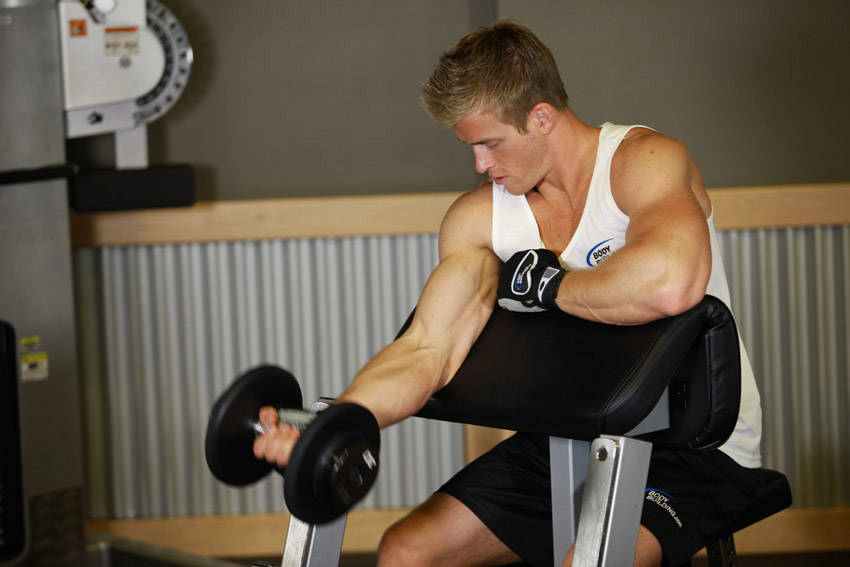
Via www.bodybuilding.com
When it comes to the number sets, it is more favorable to do 3-4 sets. Despite the fact that classic bodybuilders do five sets, there is no scientific sound research of actually doing more sets. It is only recommended if you are willing to have more strength than muscle size. Warm-up sets are not included, and it could confuse you with some programs that require 5 or even six sets for a particular exercise. It is only the first 2-3 sets are the warm-ups, and the remaining sets are obviously the working sets.
REPETITION RANGE

Concerning the sets of your workouts, the rep range is considerably critical due to the hypertrophy that is needed for your muscle to grow. A considerable rep range would be 8-12. It optimizes a hypertrophic response, and have a significant impact on anabolic processes. Also, higher rep schemes allow you to focus on the muscles. A lower rep-range scheme is more favorable for those want to achieve strength over muscle size than a bigger muscle mass. Your body relies on the glycogen energy source system, which leads to the lactic acid build up. When the lactic acid builds up in large amounts, it conducts a surge of anabolic hormones within the body which is the growth hormone and the testosterone. It will occur that you be sore after a day from a workout, but it is just simply a new muscle tissue production. The fast-twitch fibers will benefit with an 8 to 12 rep range.
Be careful not to exceed fifteen reps because, it has significant drawbacks; it doesn't recruit fast-twitch muscle fibers, and it is not appropriate for progressive overload. High rep range would only beneficial for muscle endurance type of training. In the same way, it is reasonable to apply high-rep range for sports-specific adaptations to perform better through sports or game that lasts for long durations. It is not the desired range for those whose objective is to increase his/her muscle size.
INTENSITY

After planning your volume for your routine, you have to consider the amount of intensity that you will do. The percentages of your lifts are directly related with the reps you can perform. Ideally, 65%-75% percent of your one-rep max will suffice the hypertrophic response needed for muscle growth. It is proven that the greatest muscle gains are made with moderate intensity. If, however, your weight load or intensity is 80% or higher, myofibrillar hypertrophy will come into play. It just simply means, that you will gain more strength since it involves an increase in the contractile tissue.
As mentioned, progressive overload is needed for you to continue making muscle gains, and at the same time acquiring more strength. As much as possible, try to have a 5-10 pound increment weekly. It is a slow but sure process that will guide you to be massive.
Moderate weight load is reasonable because of the time under tension you can do. The control of the eccentric and concentric phases of the movement will allow more glycogen activation, and it will provide anabolic stimulation to the muscles.
FREQUENCY PER MUSCLE GROUP

The body-part split type of training is the most common amongst all methods in bodybuilding. Doing the method mentioned above will concentrate on that muscle, and give an ample time of recovery before hitting the same muscle group again. However, it is not an efficient way of training. Every single qualified trainers and coach suggest to training the muscle group twice per week. In addition to that, it applies to all levels of bodybuilders from beginners, intermediate, and advanced athletes.
A sample split would be an Upper and Lower body split. For example, on Monday you work on your upper body (i.e. chest, shoulders, back, and arms), and on Tuesday you will execute (Quadriceps, Hamstrings, Calves and Glutes). Then, you can recover on Wednesday, and repeat the same body part for Thursday and Friday. It is your decision to make if you desire to rest on the weekend, or you may rest on Saturday and start for the second week on Sunday immediately.
FAILURE

Honestly, this variant is controversial if it is required to reach or even attempt training to failure to grow muscle quickly. Failure occurs when the muscle can’t exert enough force or effort during the concentric phase of the movement. It receives criticism that training to failure is no use because, it will just only exhaust the muscle, and it won't lead to any development in the future. Others would state that it is the critical way of training for rapid muscle growth.
Some researchers say that training to failure increase the levels of catabolic hormones, and drastically suppresses any form of anabolic growth factors such as the IGF. In simple terms, it slows down any increase in the long run. Oher experts state that progressing through failure elevated the levels of nucleotide adenosine monophosphate (AMP) compared to non-failure training. Furthermore, escalated EMP would show that the cell is drained, and protein synthesis decreases.
Through failure, lactic acid increases as it is essential for muscle growth because it activates intramuscular growth factors. Another benefit is that you smaller muscle fibers experience fatigue toward the completion of the set. Eventually, your nervous system would utilize your body's larger fast-twitch muscle fibers. You have to be careful as you might bring yourself into central fatigue. When it occurs, your capacity to work in your next exercises will decrease greatly. You will just notice that your reps are getting lower and lower every set. It is highly possible the latter would occur, so it would be the right time to introduce yourself to forced reps or drop sets.
- Forced Reps– A spotter or a training partner would be of great help to assist you with this method. When you are about to fail on the current rep, your partner would then help you to exert effort to complete the set.
- Drop sets – this method is applicable if nobody is available to help you. All you need to do is lower the weight on the following sets, and perform more reps to maximize the use of your muscle fibers.
In conclusion with this variant, you may apply training to failure, but there are only certain times that you can do it.
COMPOUND OR ISOLATION

Via https://www.mensfitness.com
When creating a bodybuilding routine, you have to figure out which ones would highly favor fast muscle gain. It could be categorized as a multi-joint or a single-joint movement. To this date, it is still an ideal argument amongst the practitioners in the muscle-building particular type of training. In fact, both compound and isolation movements are supposed to be included in your training as they have different benefits from one another.
Isolation Exercises – isolation movements favor single joint exercises in which only a single muscle group is engaged itself. It is done with minimal or without the inclusion of supporting muscle groups. Usually, any exercise that applies curling, raising or extending is considered an isolation exercise that affects one particular muscle group whether if it is a major or a minor area.
It is important to include it in your training as it is beneficial to aid any muscle imbalances that your body features. More so, it allows you to train the muscle through its full range of motion to a maximum extent. Also, it aids in the development of your focus to that particular muscle group, and you allow yourself to work on the muscle more efficiently. Your mind can generate the amount force you exert on that muscle as it is connected your brain by the nerves. All of it leads to working your muscles thoroughly. Effectively training your muscle through isolation movements will maximally stimulate the fibers.
Compound exercises – It is a multi-joint movement that utilizes more than one major muscle. It recruits other smaller muscles to secondarily move with the main muscle group that is being targeted. Bench press, squats, deadlifts and overhead press are the perfect examples of compound exercises.
Unlike the isolation exercises which are only supplementary movements, compound exercises are considered primary workouts. In effect, you have to include more compounds to gain more muscle. According to researchers, multi-joint movements allows your body to release growth hormones. Having that said, it is widely considered and proven that it is effective to recruit more overall muscle fibers, thus allowing heavier weight load capacity. Despite the fact that it requires significant stabilization, a training session should start with compound exercise as the primary movement. It’s physically taxing to the body's performance, so it only means that you have all the "fresh" energy to perform the exercise at your maximum intensity. Doing such will result in a greater release of anabolic hormones.
It will still depend on your preference because there are lifters who would only perform compound exercises and still get the results they work hard for and vice versa. Just ensure that you don't cheat your reps, and maintain the proper form for each exercise.
SAMPLE EXERCISES (KEEP IT SIMPLE)
Squats – The best leg workout known to man. It is a whole-body exercise that can strengthen and build other parts not just the legs. If you go heavy on this lift, try protecting yourself by using a weightlifting belt or knee sleeves to prevent injuries.

Via https://www.t-nation.com
Deadlift – another mass and strength builder exercise. It doesn't just prioritize you back muscles, but it engages your glutes, arms, legs, and core. It is a very simple move to execute, but it is also a great testosterone booster. I can suggest using lifting straps if ever your grip is starting to fail throughout the sets.

Bench Press – is the king of all chest builders. It is a classic and a very popular to everyone, and lifters would love to do it on a Monday. There are different varieties of bench presses, or just an adjustable weight bench if you want to work on different angles. Use wrist wraps when you are trying to progress and to avoid injuries.
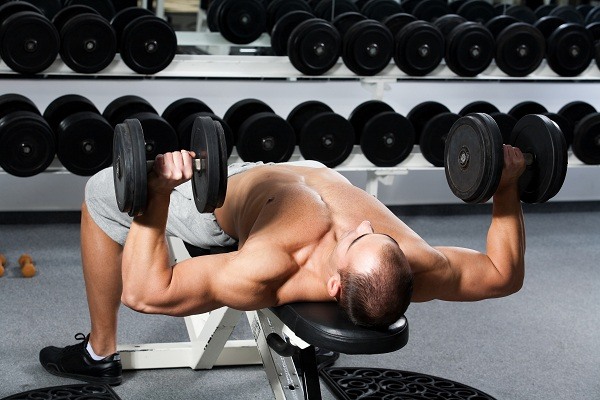
Bent Over Rows – This is to give you that thickness to your latissimus dorsi. You can do a single arm or dumbbell variation, or the barbell bent over row. Both versions will engage the same area.

Bicep curls – any variation of the bicep curls will give you that arm density that you've always wanted to see through your mirror. Remember to always squeeze every rep and a full range of motion for optimal bicep growth.
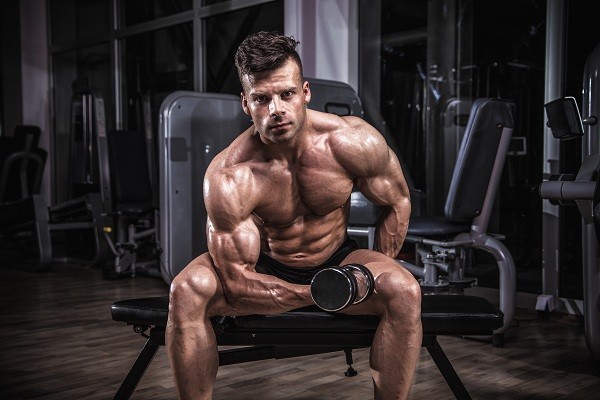
Dips – I want to include this on the list because it is a triceps and shoulder exercise that builds pushing strength. It is also a body weight movement, but there machines that simulate a dipping movement as well.

Shoulder Press – you may opt to do standing or sitting down either with a barbell or dumbbells. It builds your overall shoulder size from the back to front delts, and also increases the size of your trapezius muscles.

Via https://www.mensfitness.com
DIET AND NUTRITION

Training is truthfully the easiest part of muscle growth, but feeding your muscles healthy food is crucial for gaining mass. Your diet will determine the result of how aesthetic you desire your body to be. Put it this way, you can search for a tried and tested workout program, but if you don't feed yourself right, you won't gain – at all.
1. PROTEIN

Via https://www.leanandmuscular.org/
Protein is made up of amino acids, and it is impossible for your muscle to be repaired and built with the absence of it. Having the right amount of protein will place you in an anabolic state, and it will allow you to build muscle. Any bodybuilder should have a brief knowledge that it is needed to gaining muscle, and around 70% of our protein is found in muscle. However, your diet should include essential amino acids as our body can’t produce them.
Complete protein sources can be found in meat, fish, dairy, and soy. Having that said, some of what I previously mentioned sources are not completely utilized by our bodies such as soy and fish. Although, animal protein contains high calories, and it might not be ideal for some athletes or fitness enthusiasts alike to get their main protein source from it.
Most of the time, bodybuilders would opt to go for an animal based diet to acquire complete protein for optimal muscle growth. You have to select wisely from which “animal” you desire to receive your protein from as it could bring some health issues in the long run especially if you have blood-related sicknesses.
- Chicken is the most common eaten meat for body builders, and mostly they purchase the breast part because of its lean meat compositions. It doesn't take much time prepare and cook chicken since it is a versatile meat.
- Beef is a second popular choice next to the chicken. There various types of beef cuts that you can get from the butcher. It also contains a reasonable amount of iron, and it would of big help to supplement your daily mineral needs. However, over-consuming red meat could be dangerous to a person dealing with a history of hypertension and high blood pressure.
- Pork is widely available at your local butcher or meat shop. A suggested cut from the pork would be the tenderloin or the hind leg meat. It is a lean part of the pig, and would roughly offer you from 15-20 grams of protein. If it tempts you to purchase pork products such as sausages, refrain from doing so. It is high in cholesterol and sodium.
- Fish, specifically fatty fishes, are in contest with other protein sources to be the best for bodybuilders for their numerous fitness benefits. Not only that it has high amounts of protein, but other healthy nutrients are obtained from it. Fish products contain Zinc, and it is an ideal mineral for bodybuilders as it gives a natural spike of energy, and more importantly, it supports testosterone production. Fatty fishes are high in Omega fatty acids to alleviate joint problems and heart diseases. Although, be careful as news has it that our oceans are highly contaminated with mercury.
If, however, you plan to take on a plant-based or vegetarian diet, at most times, they are not complete protein sources. You should find other vegetables and greens that could supplement the amino acid that it lacks from its chemical composition. Even with incomplete essential amino acids, researchers support and proves the fact it still stimulates protein synthesis in our muscles. Numerous athletes have gone or are undergoing plant-based diets. In another sense, it also has little calories to build a lean and dense muscle mass.
In every meal that you eat, it is reasonable to consume 30-40 grams of protein throughout that day for an active anabolic state. It will ensure that you have the necessary nitrogen balances your body desires. An ideal measurement of protein is 0.7g-1g of protein per body weight (in pounds).
2. CARBOHYDRATES

Carbohydrates are your basic, and importantly, a source of energy. Some of the athletes would exclude carbs in their diet to achieve a more chiseled aesthetic appearance. What they do not know is that your body will initiate to use protein as the energy source. In short, protein needs carbohydrates to activate.
Glucose is found in carbohydrates, and believe it or not, if you do not obtain enough glucose in your diet or from the food you eat, your body will gradually convert fat and protein as its main energy source. It is your glucose levels that could decide how fast your body burns calories, and how It could perform on a daily basis. You may only opt to cut carbs, but not for a prolonged period or you won't be able to gain muscle at all.
At least a moderate consumption of carbohydrates would suffice to spike up your energy levels, as well as, aiding your muscle to grow. It also promotes your recovery after an intense workout session.
3. DIETARY FATS
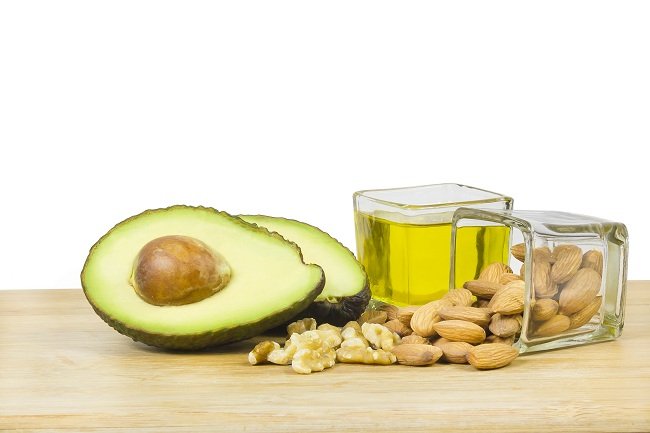
Dietary fats are essential nutrients that must be used in your diet. At most times, we have been educated that taking any fat promotes to any heart-related diseases. What you may not know is that it includes important vitamins and energy that your body needs on a daily basis. One of the key functions of adding fats into your diet is to aid your body's recovery period. It creates structural components of membranes, and to maintain a healthy living cell. There are different types of fat, and the most common ones are saturated, unsaturated and trans.
Omega-3 and Omega-6 are unsaturated fatty acids. It is used for body’s metabolic and hormonal activities. Omega-3 fatty acids are the bodybuilder’s most desired form due to their tissue repair and joint strengthening functionalities. On the other hand, omega-6 play a crucial role in brains function, growth, and development. In addition to what has been said, it helps maintain bone health, regularize metabolism, and maintain reproductive system.
Saturated Fats are the ones you extract from animals commonly known as the "back fat." At most times, it is quickly judged as bad fat because of misleading information and health-related results. In moderation, it is also substantial for muscle growth. The good source of saturated fat is Medium-Chained Triglycerides (MCTs).
MCTs’ chemical structure is not like the other fats which are long, and these fats can be found in coconut oil. It is quickly infused into the bloodstream after ingestion. More so, it bypasses other chemical processes and avoids any delay to be turned into an energy fuel. On a more interesting note, after series of extensive studies, MCTs is also linked to lessening body fat percentages, boosts anabolic and recovery processes. Despite the various arguments stating that it could lead to heart diseases, other results show that it negates the harmful effects of oil in our blood sugar levels, cholesterol or blood pressure. A recommended daily dosage is at least one to two tablespoons at least three times a day along with your meals.
Trans fats are the type that you should completely avoid if you want to build muscle, or better yet, to have a healthy lifestyle. They are found on most of the products like commercially branded cookies, chips, fast-food items and other jarred items primarily because it allows the product to have a longer shelf-life. Also, trans fat is hydrogenated, and it has numerous adverse effects in our body such as; delayed essential fat breakdown, enhanced muscle breakdown, slowed growth, and recovery and increase body fat hastily. Some of the products as mentioned above would state "zero trans-fat" on their labels for marketing reason, if that is the case, check the ingredients if it has any hydrogenated mixtures because it is another way of knowing if the item contains trans-fat or not.
BASIC BODYBUILDING SUPPLEMENTATION

Supplements come in handy if you have a tight schedule that only requires you to have meals on the go. Moreover, if ever you fail to obtain food that has low nutritional contents, supplements are always around to aid you with the minerals or vitamins that you are in deficit. Just take not to replace it with a whole-food because it is only a supplement, not a replacement. Some have strong, active ingredients that are very harmful to our body, and could cause serious side effects if not taken in moderation. If you have had any severe reaction from taking supplements in the past, consult your doctor or physician for advice.
1. WHEY PROTEIN SHAKE
Whey is the liquid extract that separates from the milk during cheese production. It also digested and synthesized in our body quickly, which makes it an ideal protein supplement for bodybuilders. Depending on the companies, some contain ingredients that may be beneficial to our health such as reducing the risk of diabetes, decrease inflammation, and lower blood pressure.
You must know that there are different kinds of protein shakes namely whey protein concentrate (WPC), whey protein isolate (WSP), and whey protein hydrolysate. Don't worry because all of the types mentioned above will still build you muscle.
- WPC is the cheapest form of whey available in the market. For obvious reasons, it's been saturated to contain protein primarily. It is commonly used for baking specifically if it is the lower concentrates for culinary reasons. If it has more protein concentrate, then it is usually the type of what they use in the industry to manufacture protein shakes. Aside from being a cheap variety, it is almost effortless to mix natural and artificial flavors which make it appealing to customers.
- WPI, like the WPC, also contain 90% protein, but through the process, they filter out fat and lactose. In contrast to the WPC, you may opt to purchase a WPI product if your goal is to build lean muscle. It is quite expensive than a WPC product, as it goes through chemical filtering processes.
- WPH is a faster-digesting whey protein because your body initially hydrolyses proteins before it could be synthesized, so your body skips a few processes of digesting the macronutrient. In contrast with the previous whey variants, WPH can produce 28%-30% more insulin. Having that said, your body can recover faster due to its ability to spike the insulin levels.
There has been a debate about when is the best time to drink a protein shake to achieve its optimal effect. Many of us have been influenced by intaking it immediately after a workout, and others would also add that there is a 30-minutes allowance. Researchers have concluded that the time frame that your muscle can synthesize protein is from 24-48 hours after your workout, so there's no rush to intake your protein shake. In short, you may have a serving whenever you desire to as long as you don't exceed the recommended servings, and if there is no available protein source nearby.
2. CREATINE
Creatine is one of the most high-selling supplement to date. It is a straight-forward product that is highly effective amongst athletes. The effect has been very rewarding for overall performance and muscle growth. Considering the fact that it is a nonessential dietary supplement, it is found in meat and fishes. Once consumed, it synthesizes through the liver, and it would then be released into our bloodstream and be induced in our muscle cells. While it flows through the muscle, it will transform into creatine phosphate that gives a spike in ATP levels. With that said, consumers of the said product recover faster while resting in between their workout sets.
Creatine is subject to boost your muscle strength as studies show that it can rapidly increase your one-rep max no matter what workout program you choose to train. Compared to a non-user, it also very efficient for people who execute hypertrophy specific training as it aids blood flow and anabolic properties. Numerous universities and researchers conducted a test, and they resulted that powerlifter taking creatine would increase 6-10 pounds of muscle mass or lean body weight.
Rumor has it that over consuming creatine would lead to serious liver and kidney damage. In fact, there have been no cases of liver and renal failure due to creatine intake. However, it is possible to have frequent muscle cramps if you fail hydrate yourself sufficiently while going through a creatine cycle. Also, take fast-digesting carbohydrates along with creatine for optimal results. A suggested dosage on training days would be 5 grams a serving before and after a workout. On off days, it recommendable to take a single serving.
3. BRANCH-CHAINED AMINO ACIDS (BCAAs)
As we know, Protein consists of different kinds of amino acids. Having that said, BCAA is known to be the "building blocks" as it contains the three essential amino acids namely leucine, isoleucine, and valine. It boosts your muscle’s growth quicker than not taking one. Although, many people don’t quite understand how the BCAA works around the body. It is a highly effective supplement that has been around for a long time.
As in you ingest amino acids, they primarily go to the liver, and consequently, it breaks down for an energy source or repair muscle tissues. What differs it from BCAA is that it goes directly to your muscles and does the latter function. BCAA can help you prolong your workouts, and at the same time, "refueling" your energy as your training gets more intense. Having hat said it is also meant to delay fatigue while working out. In short, trainers are physically and mentally focused when lifting weights or performing their routine.
The amino acid leucine is proven to elevate the rate of muscle growth by regulating muscle protein synthesis. Moreover, it is also an insulin booster which is known to be an anabolic hormone. In another sense, it enhances muscle development by promoting growth hormones. Simply states that the more growth hormone levels your body produces, the faster your muscle grows.
Other vitamins and minerals are usually found BCAA products. Some of which are Zinc, Chromium, and Vitamins, and depending on the manufacturer, they would tend to add Vitamin B complex to the ingredient. In other words, BCAA's have loads of benefits such slowing down muscle breakdowns, insulin regulation, strengthen nervous systems, and boosts glycogen production.
A recommended intake of BCAAs is about 5-10 grams per serving during your workouts. Depending on your fitness goals, you may opt to take BCAA’s first thing in the morning to halt the catabolic process from your slumber.
COMMON DILEMMAS
1. GROWING MUSCLES FOR HARD GAINERS
I would often encounter people stating the fact that indeed they are hard-gainers. No matter how much calories they intake, they would burn it off with a fast metabolism. Another concern is that they lack appetite, and they have hard time eating sufficient calories. So, it ponders upon themselves on how to gain mass? With the right workout regimen, diet and nutrition plan you would be able to see some “huge” results.
In gaining weight, you have to prioritize feeding yourself all throughout the day. The effort you exert in the gym should be the same on you would plan and prepare the food you need to eat. Weight gain is not an easy, and it will take a while to do so.
In all aspects of taking your macronutrients, take into significant consideration about consuming hefty calories as it will rely on how big you want to be. Calculate your calorie intake to know what food you need to purchase for you to gain mass. Others would opt to use a supplement, like a mass gainer if they are having difficulty on their meal plan.
You have to understand that if you want to gain weight, you have to schedule your meal plans for the week ahead of time. Try going for 6-7 full with 2-3 hour intervals. It is a challenge to consume as much in a day, so that's why you have to get up early and start eating. If you decide to work out in the morning then eat a light meal, so you won’t feel bloated. Once you have accustomed yourself with the eating regimen or pattern, do not alter until you have reached your desired weight.
As far as the training would go, simplicity is the way to go. You don't need such complex movements, so just go back to basics and consider compound exercises as your staple workouts. You don't to do much cardiovascular training because it would apparently halt your growth. You may jog 30 minutes twice a week for recovery purposes. Lastly, minimize your workouts and heavy is the way to go. A suggested regimen would be a upper-lower 3-day split.
2. RETAIN MUSCLE MASS WHILE CUTTING
It may sound impossible, but you can preserve muscle mass while losing weight. Weight loss and fat loss are two entirely different things. Weight loss is losing the weight of your body composition, while fat loss is simply heading to a leaner body weight while still retaining your muscle. Still try to watch your diet, supplementation, nutrition and training as they are crucial to every aspect of fitness. A fat-burner supplement would help if you have difficulty shedding of the weight.
In a nutshell, cut your carbohydrates and calories, but retain your protein intake. Specifically, for cutting, carbohydrates are not necessary if you're on your off days, or if you know that your day will be a laid back from activities. If you still wish to consume carbs, you may take 100-150 grams of carbohydrates, and that should suffice you until you go to bed. If you must, take fats as your energy substitute. Fats are usually absorbed by our body slower than carbohydrates. What I mean by "absorb" is, turning the available and stored energy into a body fat.
In a similar case with gaining mass, you still have to take note of your meal plan and search as many alternatives as you can. For example, white rice is your primary carbohydrate source, and you may substitute it with brown or wild rice because it has higher fiber and low sugar content. At most times, don't get hungry and avoid eating one big meal in one sitting. You can also eat slow digesting protein as it will slow down the catabolic process that naturally happens during bedtime. It is the main reason why you feel so dehydrated, weak, and starved. Your body is still digesting itself during sleep.
Continue with your weight training, and still pursue with the progressive overload. Some trainers would tell you to go light and perform more reps, well it is true that it will burn up all your burned fat, but you are unconsciously decreasing your muscle size simultaneously. What you can do is, mix interval training along with heavy lifting. Doing such will increase your muscle endurance while still retaining muscle mass.
3. MAINTAINING MUSCLE SIZE
Let us say that you have built muscle that you have always desired, and now you are having a hard time maintaining it. You may have a tight schedule that is keeping you form working out. Having that said, you can still preserve your mass even if you miss days of working out, and there is no deep secret about it.
If you only have a few days to exercise in a week, maintain your protein intake to provide your body with amino acids that it requires. Anything that would have protein such as poultry, eggs, fish, beef, dairy, soy, beans, and nuts can be taken. Just remember to always include protein in your meals and snack.
Decrease your carbohydrate consumption when you fail to go to the gym at three times a week. Excess carbs or unused energy becomes fat. As mentioned earlier, only consume carbs on the day of your workout, and substitute essential fatty acids as your main energy source. 50 grams of fat could already suffice you for an entire day, or 25 grams of carbohydrates per meal so that you won't starve quickly.
When it comes to training, and you can only do so for twice a week, I highly suggest to give one day for push and pull or upper muscle groups, and the second day for legs or lower muscle area. You don't have to complicate your workouts, but you have to work hard for it.
CONCLUSION

Bodybuilding is mentally and physically tasking. If you don't have the right attitude, mindset, and discipline on how to grow your muscle fast, you will end up wasting all of your time, effort and money. All of which that have been mentioned need to work together harmoniously. You can train as hard as you want, but without the right nutrition, minimal results will occur. What I tried to do is to educate you, and help you understand how does a muscle grow. Continue to feed your knowledge, and help your friends out by sharing this article. If you have other methods that are not mentioned here, your comments would be of great help.
References
- https://www.muscleforlife.com/how-to-quickly-gain-muscle/
- https://www.bodybuilding.com/fun/ask-the-muscle-prof-training-to-failure-helping-or-hurting-me.html
- https://www.muscleandstrength.com/articles/does-testosterone-build-muscle
- https://www.bodybuilding.com/content/building-muscle-a-scientific-approach.html

Hi there,
I’m Gregory Brown, chief editor at ConstructMuscles.com
I spend half of my time in this blog while the other half on being physical fitness trainer. Believing in the great benefits of bodybuilding and fitness to the body, I’ve been motivated to become a fitness enthusiast. It also was what gave me the self-confidence and assurance within myself both physically and psychologically.
